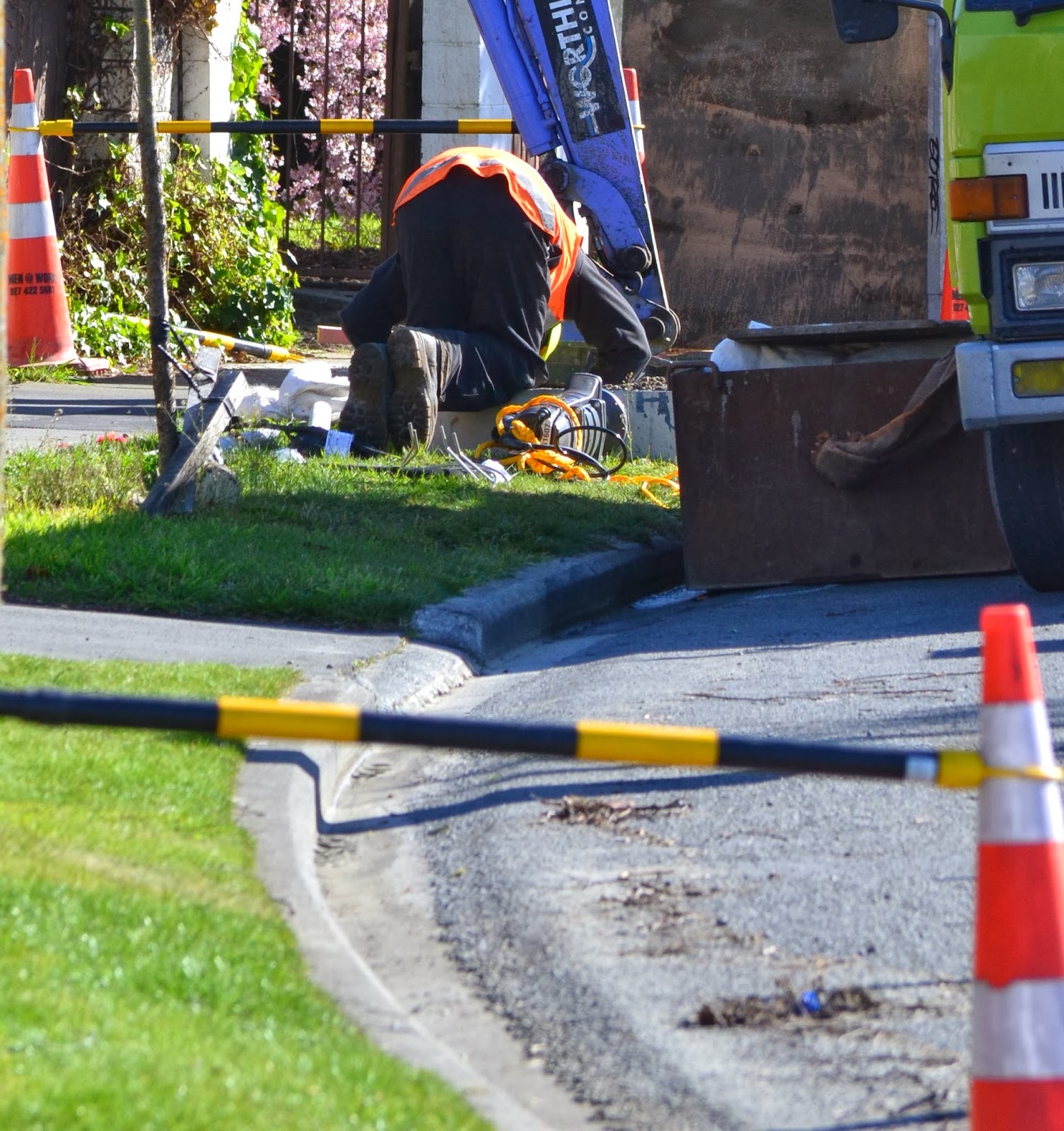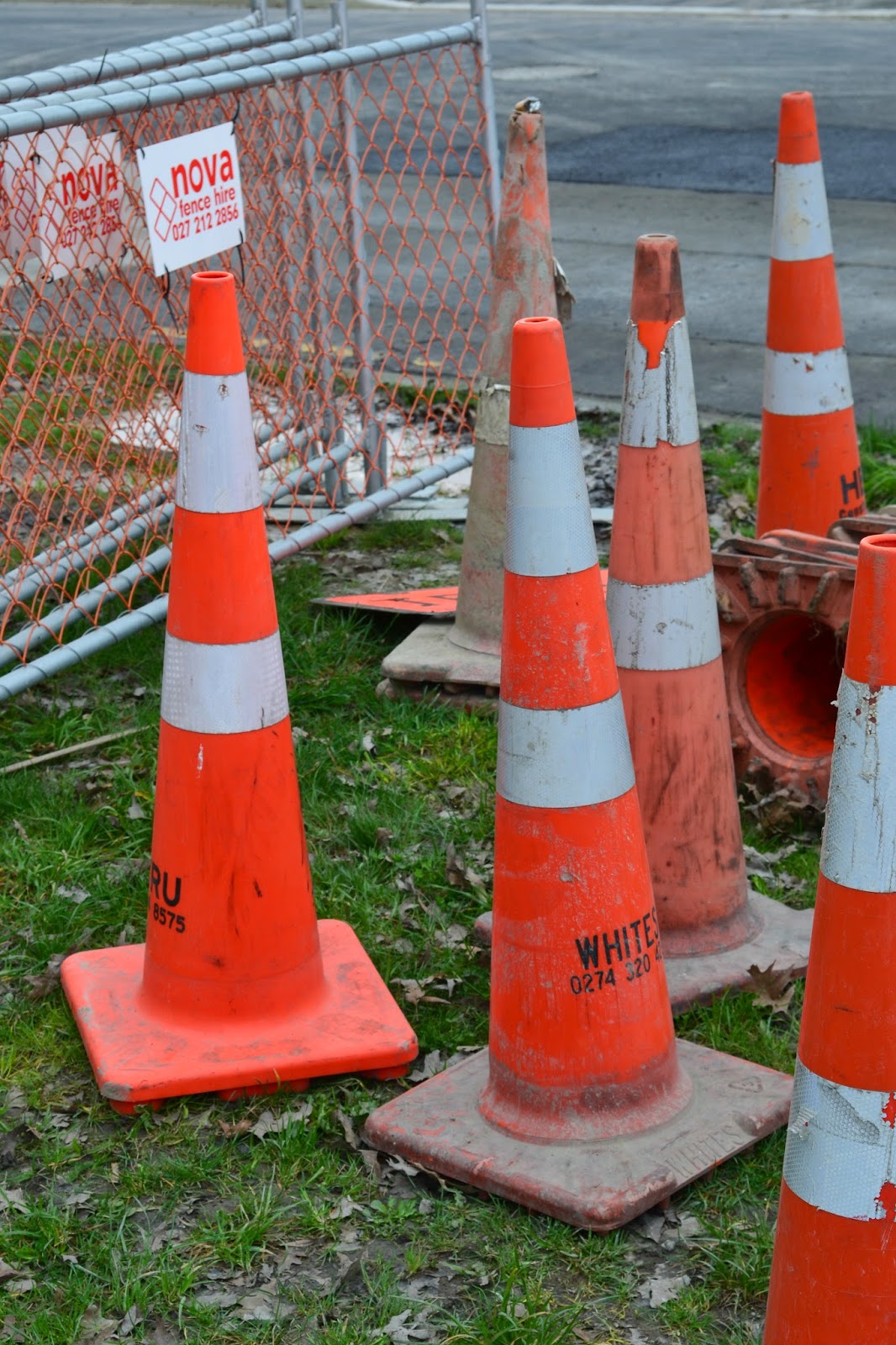This is a very unusual sight. Although it is not unusual to see two different breeds of road cones together, this is the only known colony of a large number of different road cones.
The photographer was able to get quite close to this colony. It is possible that the coneswere distracted by Nova Fence and paid no attention to the humans.
Christchurch Road cones : a field guide by Mardi Rhodes
Monday, 17 March 2014
Sunday, 16 March 2014
City Care
City Cares care so much about the city; they pick up rubbish and put it in the conveniently located bin. City Care road cones are very social and are oftern found in a colony. They often form asingle line, but have been observed forming circles and seeminly randon groupings. On rare occasions, they will form a group with other road cones.
Saturday, 8 March 2014
Atlas Roadcones
Atlas road cones are unique in that unlike other road cones, they never get lost. This Atlas knows exactly where it is. It read the map before going off to stand on the side of a road.
Friday, 7 March 2014
The origins of road cones.
Road cones have been seen in Christchurch for a very long time. No one knows when they first appeared, however there are no known sightings of them before European settlement.
The natural habitat of the road cone is dry, gravely soil. They tend to be social and prefer to live in large colonies, however solitary cones are not uncommon.
The road cone's main predator is believed to be the UC student. In Christchurch, after the earthquakes of 2010 and 2011, the number of predators declined. The amount of dry, sandy and gravely soils increased, leading to an explosion of the road cone population.
The natural habitat of the road cone is dry, gravely soil. They tend to be social and prefer to live in large colonies, however solitary cones are not uncommon.
The road cone's main predator is believed to be the UC student. In Christchurch, after the earthquakes of 2010 and 2011, the number of predators declined. The amount of dry, sandy and gravely soils increased, leading to an explosion of the road cone population.
 |
| Here we can see an archaeologist digging up a road cone in Parklands |
 |
| Experts conducting an archaeological dig |
Subscribe to:
Posts (Atom)


.JPG)
.JPG)

.jpg)